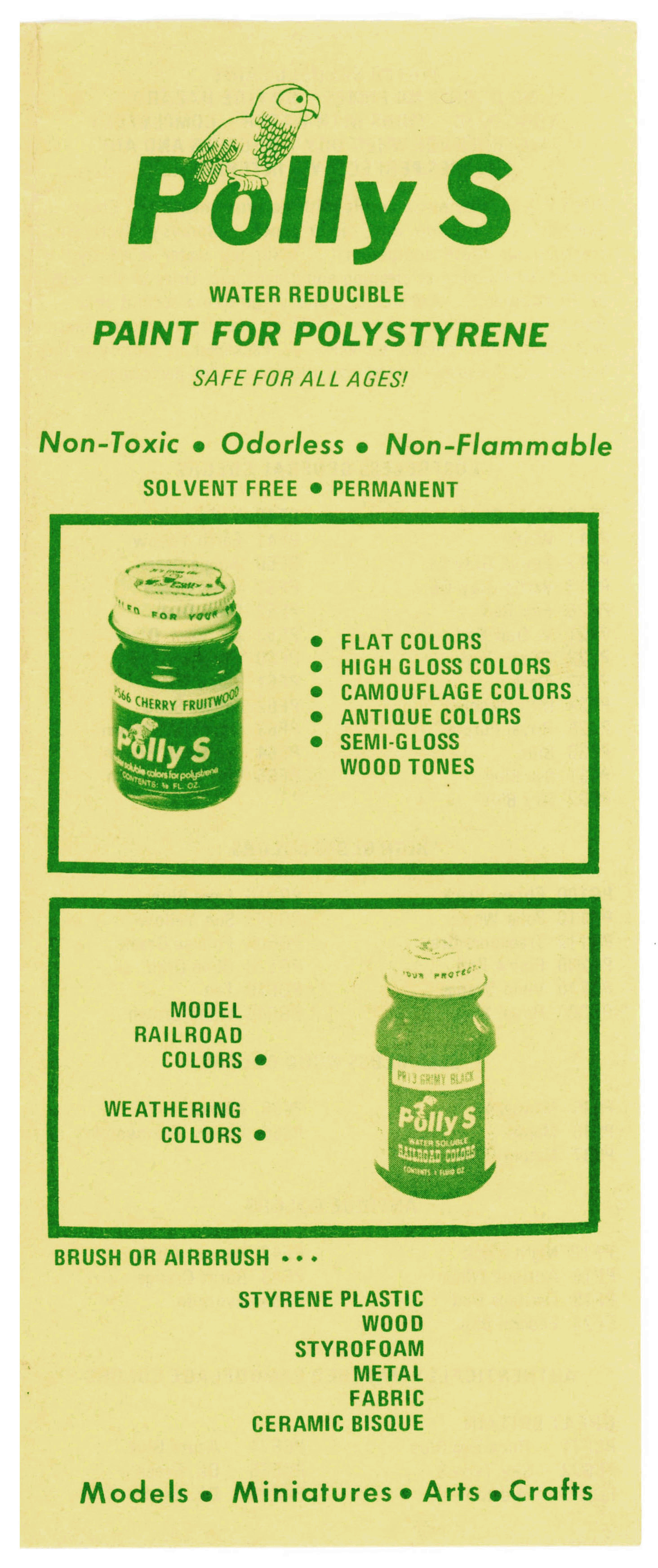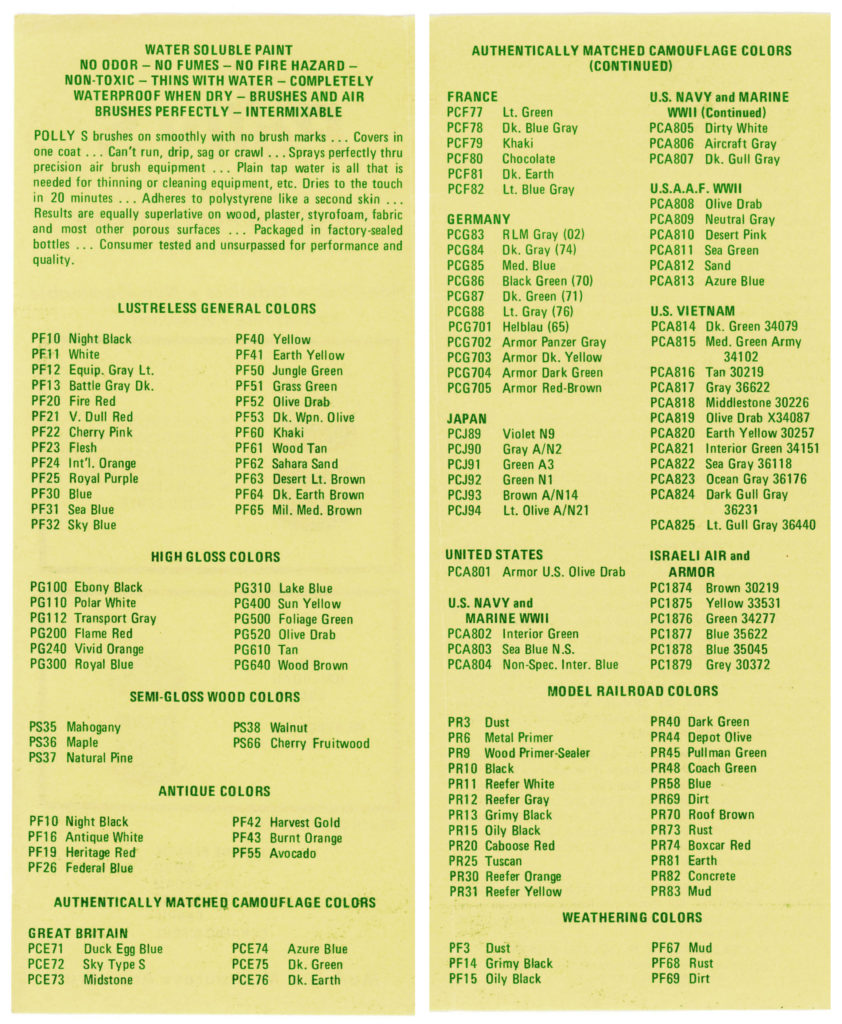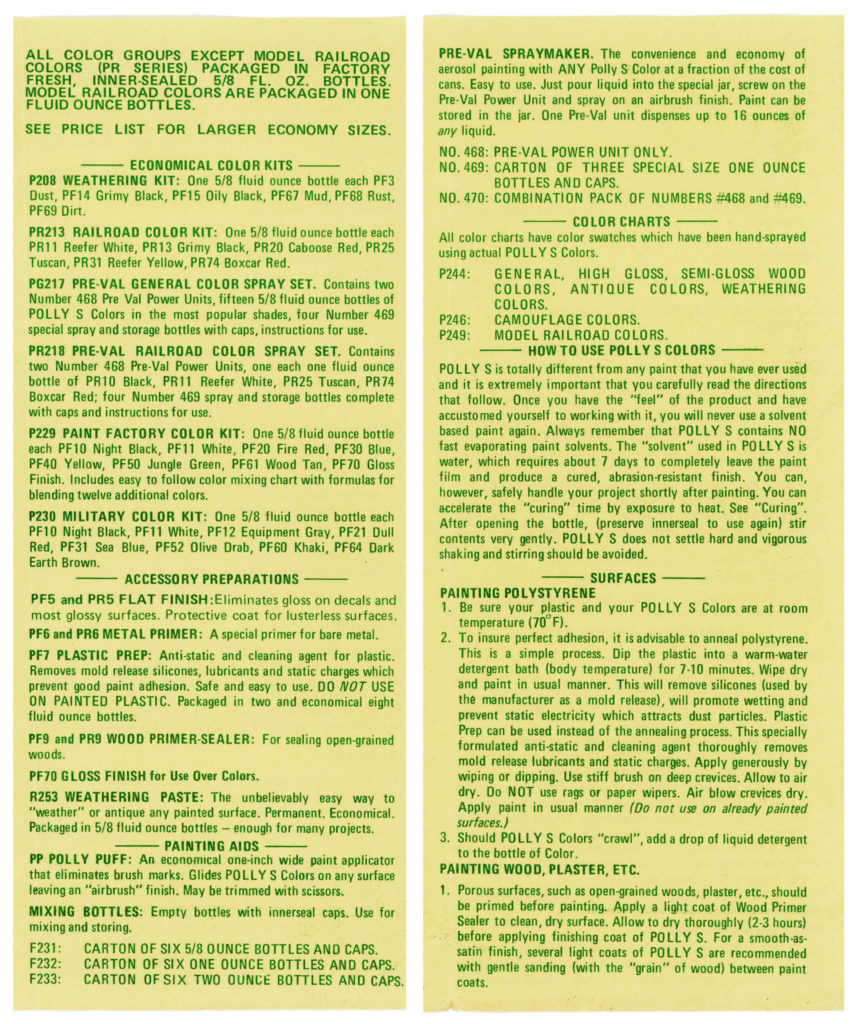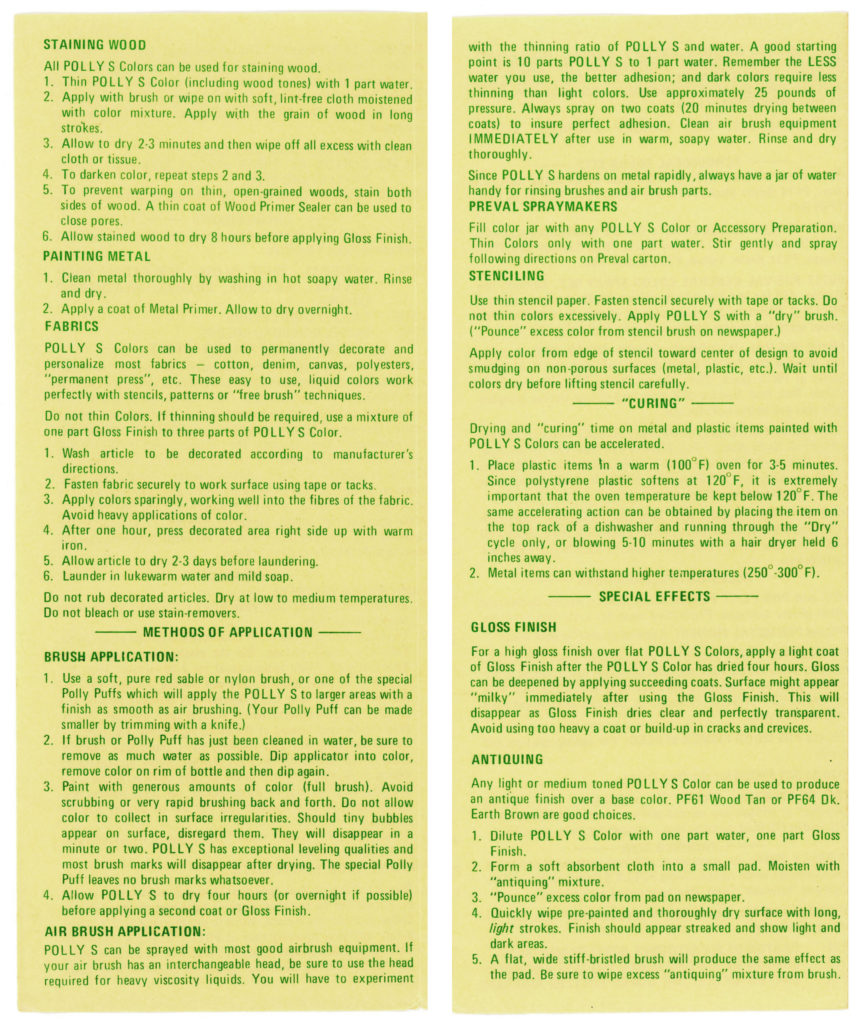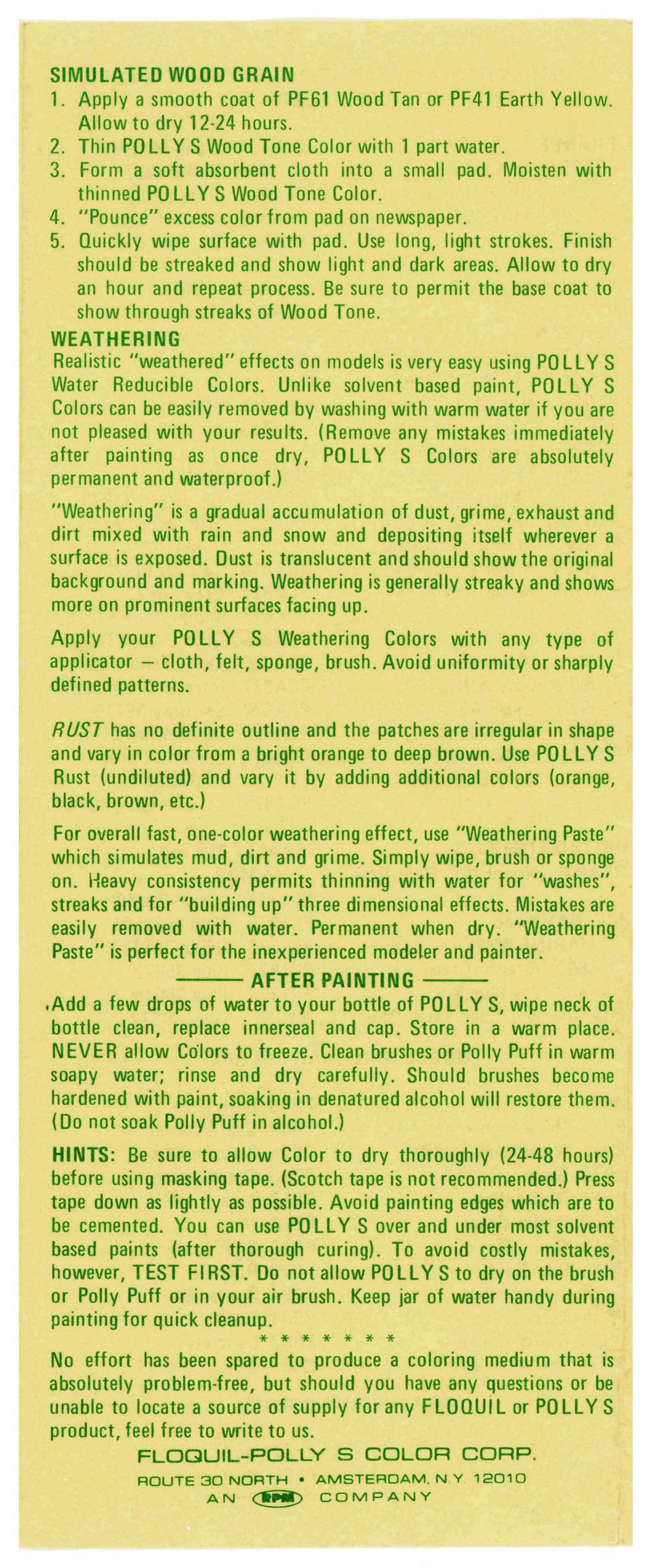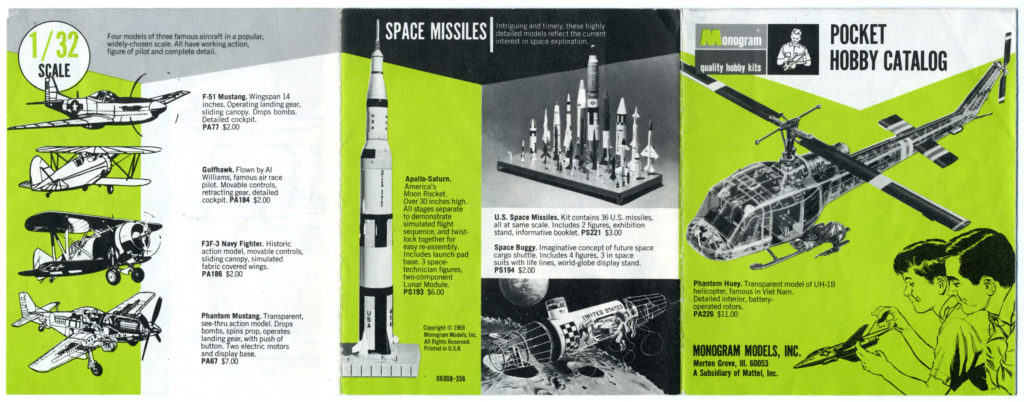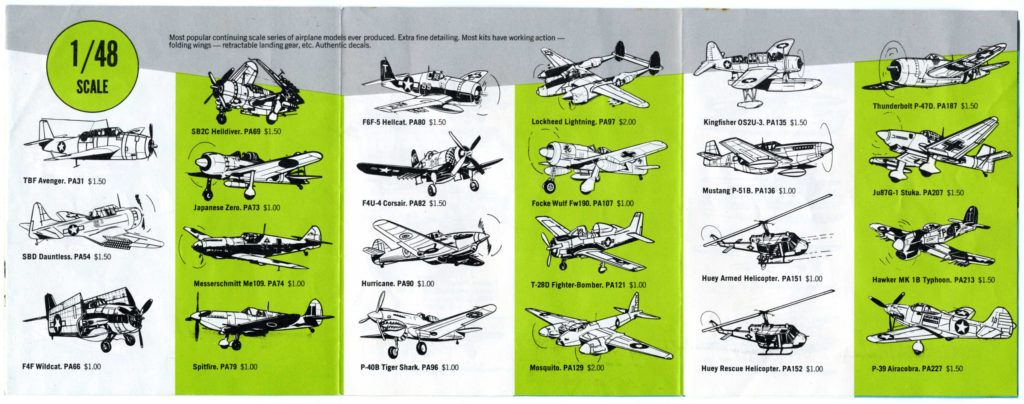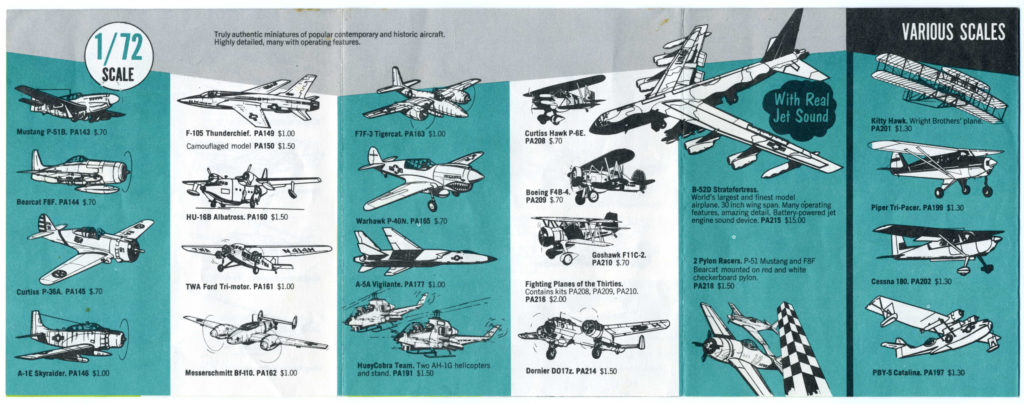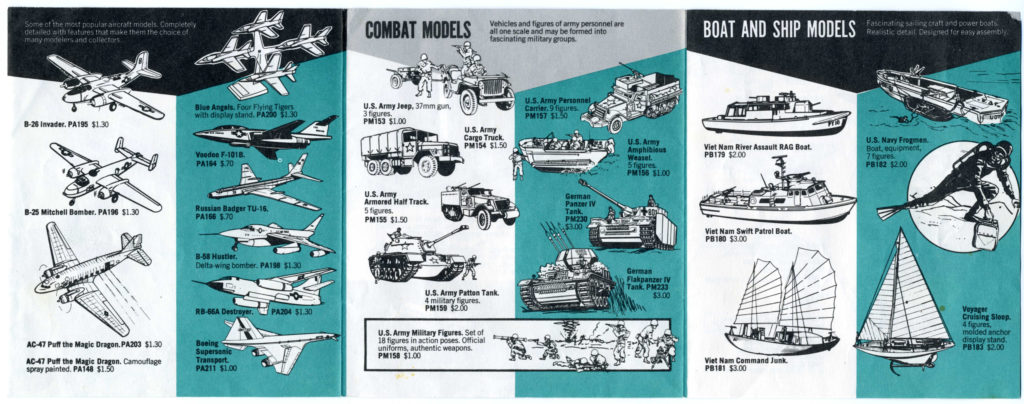The catalog below – for Polly S water-base paint for plastic models and model railroading – probably dates from the mid-1970s, and gives a “flavor” – albeit, a non-petroleum based flavor (!) – of the kind of paints available for modelers during that time.
As I recall… Along with Polly S, the “mainstays” of paints for plastic models in the ’60s through the mid-’70s were Testors, Pactra, Floquil, Humbrol, and Imrie-Risley.
Certainly Testors and Pactra then seemed to have the largest market share in respect to the hobby of plastic modelling. Their paints seemed to be ubiquitous: available in specialty hobby shops, department stores, hardware stores, and toy stores. Really, most any venue where plastic models – even of a very limited selection – were sold.
While Testors and Pactra were very easily obtainable (Testors morseo), and sold in screw-topped bottles of similar capacity, Testors’ paints had a far greater consistency and quality (higher quality, at that) in terms of what makes paint, well, er…uh…”paint” (both vehicle and filler)…than those manufactured by Pactra. The results from one bottle of Pactra to the next, were never quite the same, the same at all, or even identical. Or so it seemed… Not so for Testors.
Humbrol? Fantastic selection. Superb quality, easily exceeding Testors or Pactra. But, those “tinlets,” as they were dubbed by the company’s advertisements in hobby magazines… Easy enough to pry open the first time, but, due to the difficulty of maintaining a reliable and air-tight seal between the lid (metal) and container (also metal) – without any kind of flexible gasket (even a cardboard gasket) between, the shelf-life of Humbrol, once opened, was frustratingly; agonizingly short.
Then, in the very early 70s, I came across Polly S. Far larger capacity bottles than Testors or Pactra; a more tolerable smell (not that much of a smell, at that!). Above all, the quality and ease of use of Polly S was far beyond anything I’d previously used. The paint was “just right”: not too thin; not too thick; irregularities from brush strokes rapidly dissipated; the paint “attacked” polystyrene more gradually than petroleum based paints, yet eventually produced a finish of equal if greater durability.
It was, overall, a better concept and a better product.
____________________
The Polly S catalog below is a memento from those years…
